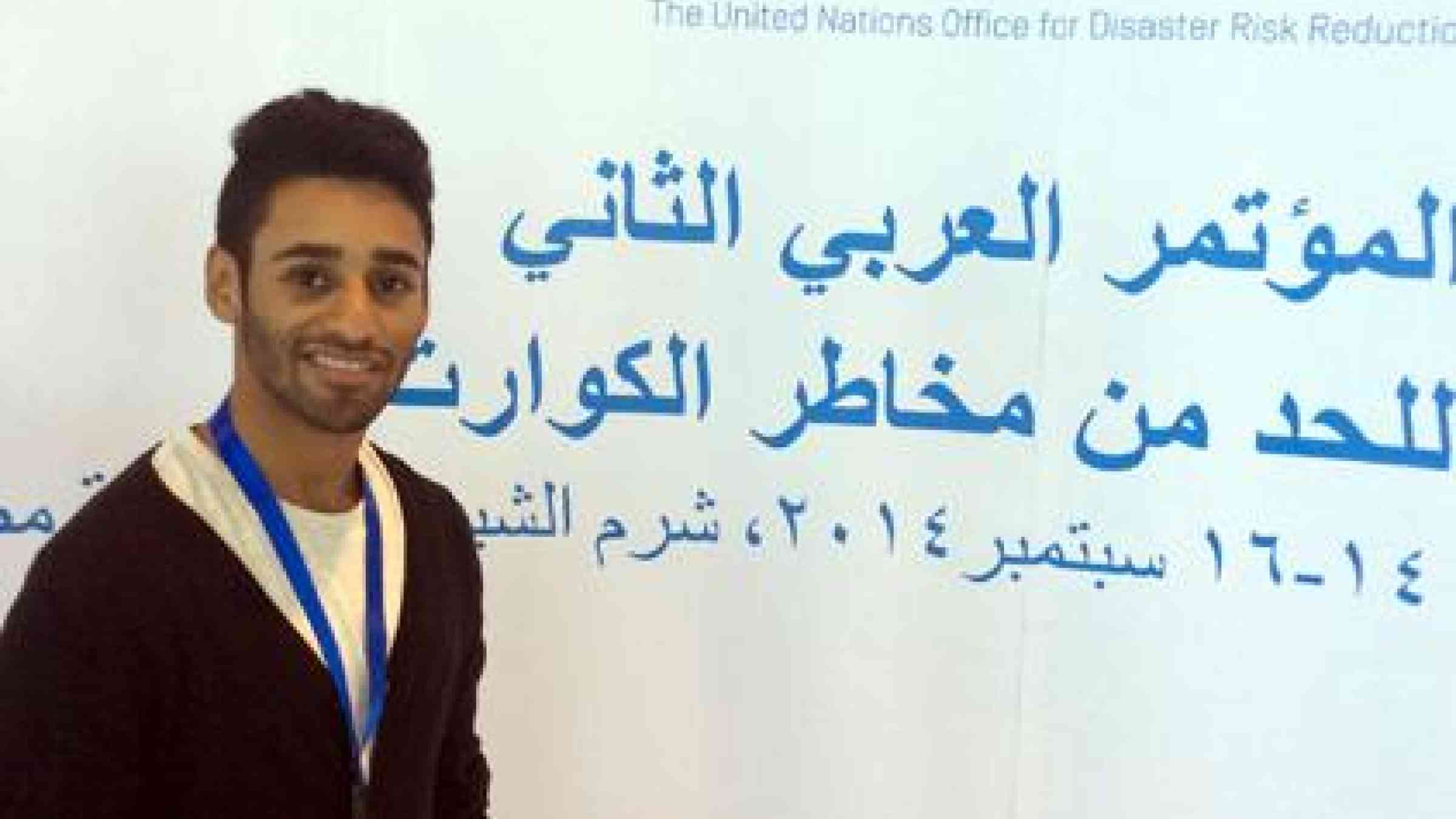What Arab youth really want post-2015

SHARM-EL-SHEIKH, 18 September 2014 - One of the high points of this week’s Arab Conference on Disaster Risk Reduction came when a 19-year-old medical student took centre stage to read out a strong declaration on behalf of one of the region’s most endangered groups, children and youth.
Majid Shangab began with the words: “We, children and youth, are one of the most vulnerable groups to disasters, climate change, and displacement as a result of conflict. And yet, children and youth are viable agents of change.”
Majid lives the life of an agent of change. Born in Saudi Arabia, of Moroccan and Eritrean parents, he is studying medicine in Cairo where he is a leading member of the International Federation of Medical Students´ Associations.
He learned the harsh challenges of disaster management as a 17-year old volunteer on the streets of Cairo and in the crowded wards of Kasr-Al-Aini hospital during the revolution.
“There were thousands of injured flooding daily. There was not the capacity to handle that and people died because of it. I was only in my first year at medical school and I did what I could, helping with things like dressings and taking blood pressure,” he said.
Along with fellow students, he makes regular forays into poor neighborhoods in Cairo to provide basic health care and is also now a representative of the UN Major Group for Children and Youth, which is a constituency facilitating children and youths achieve participation in campaigning for their priorities, commitments, experiences and needs to be included in the post-2015 framework for disaster risk reduction, which will be adopted at the Third UN World Conference on Disaster Risk Reduction in Sendai, Japan, March 2015.
The constituency he represents across the Middle East and North Africa (MENA) is one which is suffering badly at the moment. In just Syria alone, over four million children are affected by conflict. Drought and poor access to nutritious food, education and health care have left many in truly dire circumstances.
Speaking on behalf of MENA members in the UN Major Group for Children and Youth Task Force on Disaster Risk Reduction – supported by UNICEF, WHO, IOM, World Vision and Save the Children – Majid listed the group’s seven priorities for the region based on consultations with over 1,800 children and youth in nine countries across the region and a recent Arab Youth Forum for Disaster Risk Reduction:
1. Protect the rights during disasters, conflict and fragile environments.
2. Ensure safety and security for displaced children and youth.
3. Increase national and sub-national investments to promote DRR in development plans, including basic services.
4. Support children and youth’s active and meaningful participation in governance.
5. Provide quality education and ensuring safe spaces for children and youth.
6. Empower children and youth with the skills, confidence, and knowledge to strengthen their resilience.
7. Address particular risks in this region posed by climate change, water scarcity and environmental degradation on children’s health and well-being.
Majid said that young people are ready to participate actively in disaster risk reduction and he urged the Arab Conference delegates “to concretely support these priorities by establishing targets and indicators into the post-2015 framework for DRR and national development plans.”